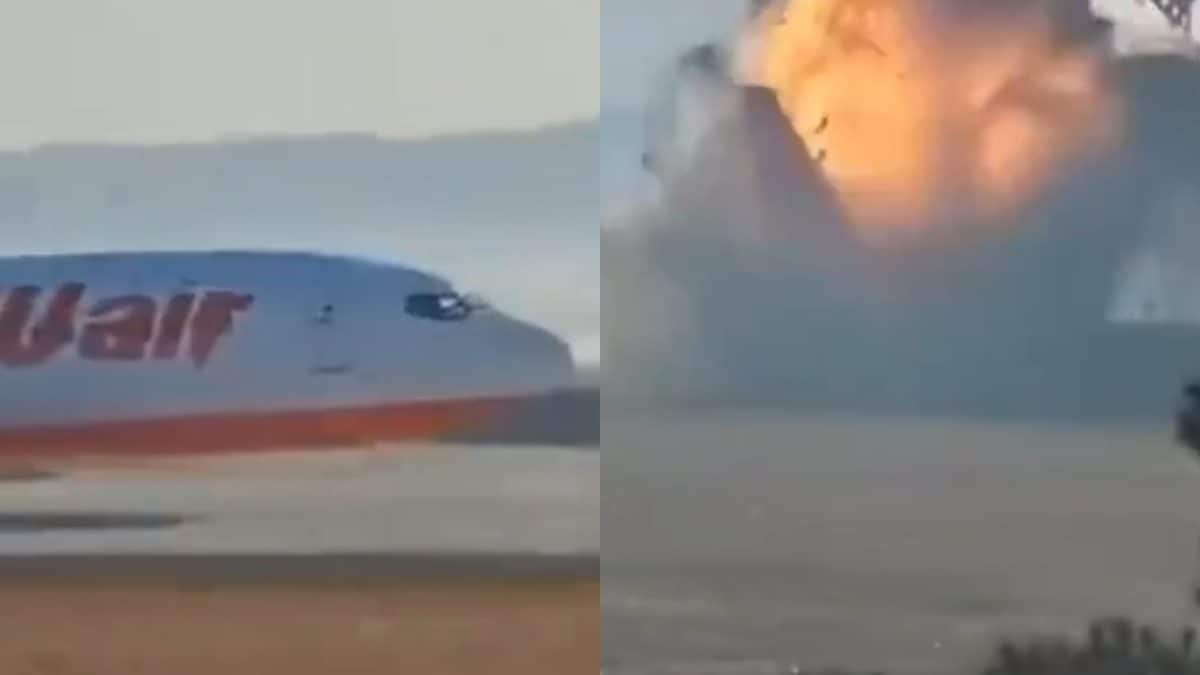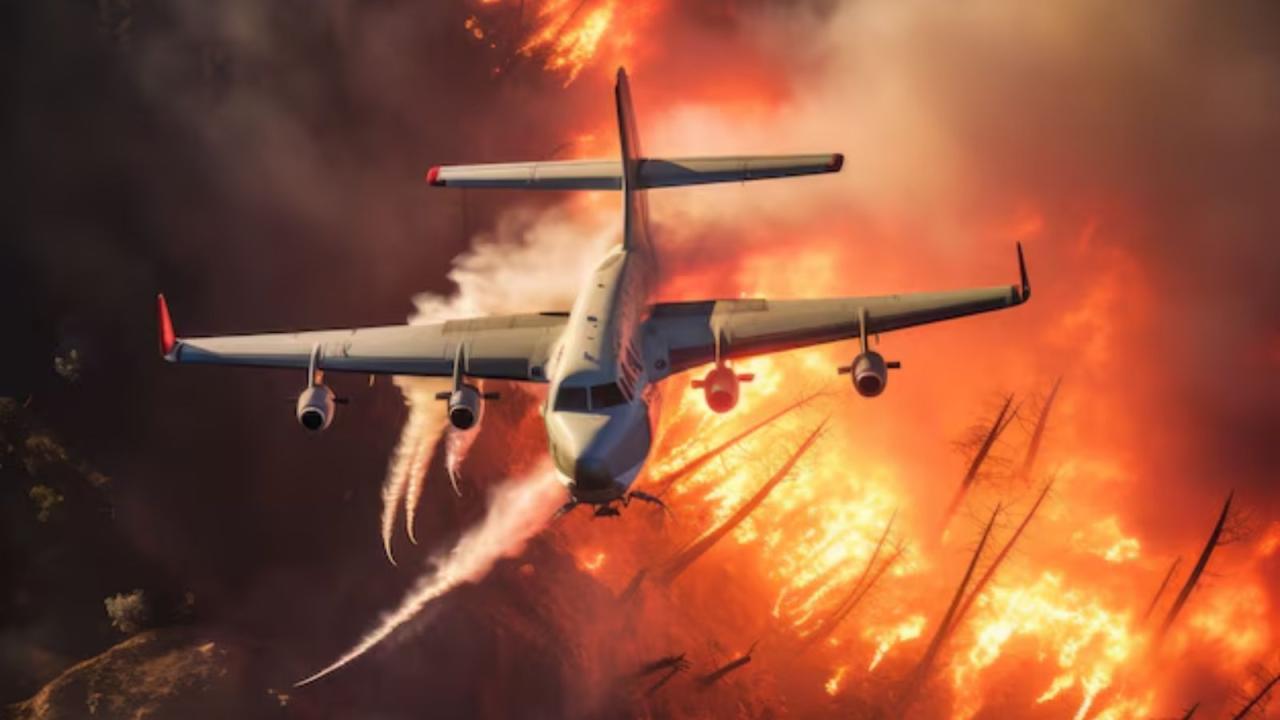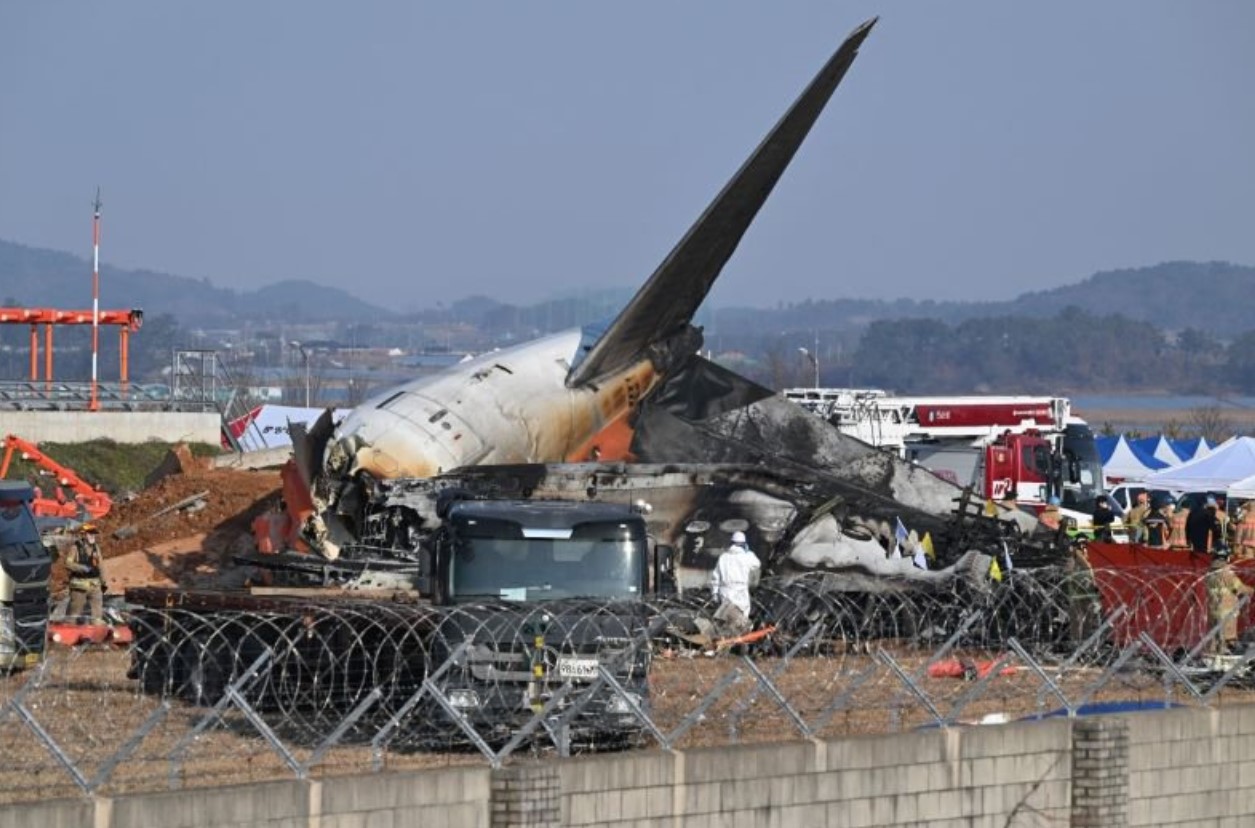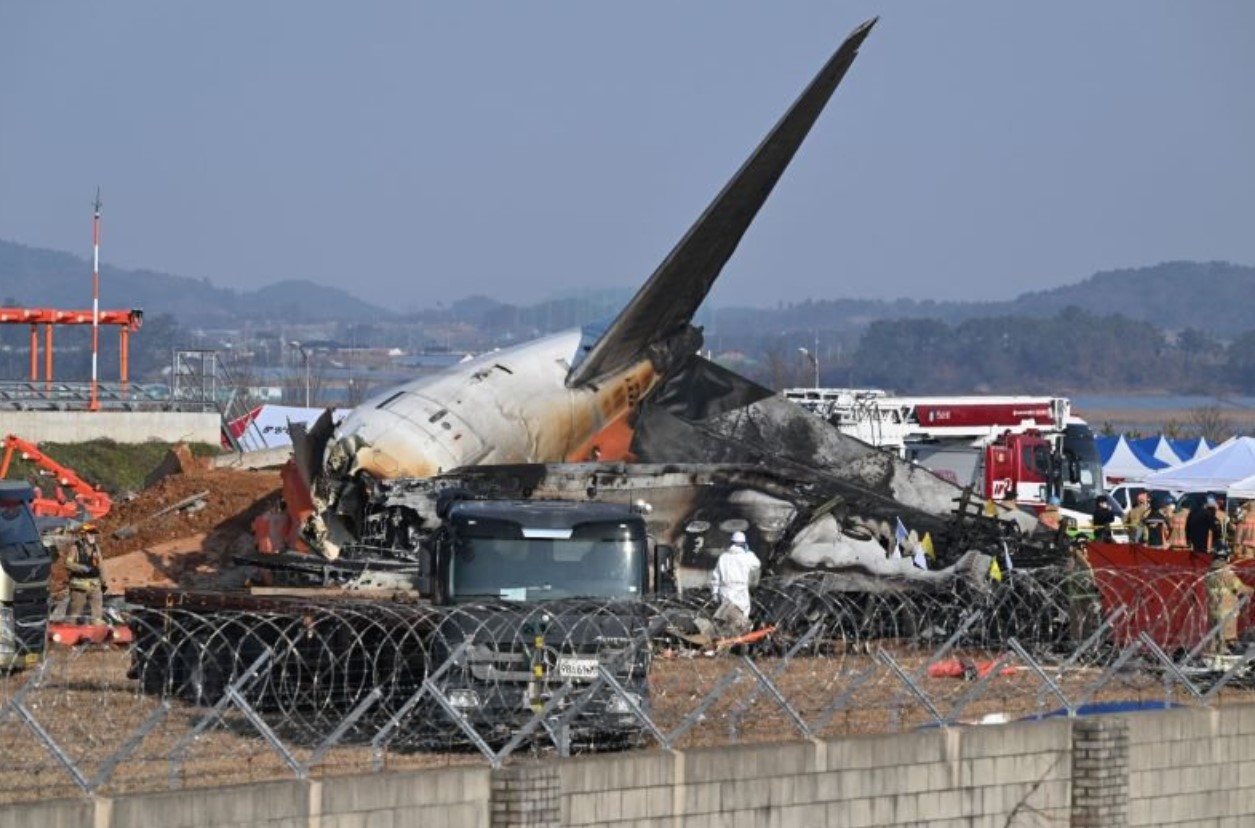Plane crash in South Korea: These devastating events aren’t just isolated incidents; they’re complex stories woven from geography, technology, human error, and the ongoing struggle to improve aviation safety. This exploration delves into the history of air tragedies in South Korea, examining the contributing factors and the lasting impact on regulations and public perception.
The recent plane crash in South Korea is a tragic event, highlighting the fragility of life. It makes you think about simple childhood games, like the traditional Korean game of gonggi game , where focus and skill are crucial for success. The precision needed in that game contrasts sharply with the unpredictable nature of a plane crash, reminding us to appreciate the small things and the importance of safety.
We’ll explore the unique geographic challenges posed by South Korea’s mountainous terrain and unpredictable weather, analyzing how these factors influence flight paths and safety protocols. We’ll also investigate the investigative processes, the role of technology, and the human element in these accidents, drawing on specific examples to illustrate the complexities involved.
A History of Plane Crashes in South Korea
South Korea’s aviation history, like that of many nations, includes both significant advancements and tragic accidents. Understanding these events, their causes, and the resulting changes in safety regulations provides crucial insights into the ongoing efforts to improve air travel safety. This article examines various aspects of plane crashes in South Korea, from historical context to technological advancements and human factors.
Historical Context of Plane Crashes in South Korea

South Korea has experienced several significant plane crashes throughout its aviation history. These incidents have led to substantial improvements in safety regulations and procedures. A detailed analysis of these events reveals patterns, contributing factors, and the evolution of safety measures.
- 1970s-1980s: This period saw a number of accidents, often involving older aircraft and less stringent safety protocols. The exact number and details require extensive archival research, but this era highlights a time of rapid expansion in air travel with corresponding challenges in safety management.
- 1990s-2000s: Improvements in aircraft technology and safety regulations led to a decrease in the frequency of major accidents. However, individual incidents still occurred, prompting further reviews and refinements of safety procedures. Specific examples and casualty numbers would require further research into individual accident reports.
- 2010s-Present: The focus has shifted towards enhancing technological capabilities and addressing human factors in aviation safety. Advanced flight data recorders and improved air traffic control systems are now commonplace. Nevertheless, the potential for accidents remains, emphasizing the need for continuous vigilance and improvement.
Following major accidents, South Korea has implemented numerous safety regulations and improvements, often in line with international standards. These include stricter maintenance protocols, enhanced pilot training programs, and upgraded air traffic control systems. Specific details regarding these regulatory changes require accessing official government documents and aviation safety reports.
The types of aircraft involved in crashes have varied over time, reflecting technological advancements and changes in the South Korean airline fleet. Older models, often with less sophisticated safety features, were involved in earlier accidents, while more recent incidents might involve modern, technologically advanced aircraft, highlighting the complexities of accident causation beyond simply the age of the plane itself.
Geographic Factors and their Influence, Plane crash in south korea
South Korea’s mountainous terrain and variable weather patterns present significant challenges for air travel. These geographical factors significantly impact flight paths and safety protocols.
The mountainous regions necessitate precise navigation and careful planning of flight paths to avoid potential collisions. Adverse weather conditions, including fog, snow, and strong winds, can further complicate operations and increase the risk of accidents. Airports located in mountainous areas may have restricted visibility and approach procedures to ensure safe landings.
A hypothetical map illustrating high-risk areas would show concentrated areas of high risk in mountainous regions, particularly those with unpredictable weather patterns and limited visibility. Areas near major airports would also be shown as high-risk zones due to increased air traffic density.
Investigation and Reporting Procedures

Following a plane crash, a thorough investigation is conducted to determine the cause and recommend preventative measures. Multiple agencies are typically involved, including the Ministry of Land, Infrastructure, and Transport, the aviation accident investigation branch, and potentially international organizations like the ICAO.
Official reports generally follow a standardized format, including a detailed description of the accident, analysis of contributing factors, and safety recommendations. These reports are usually made public, though the timing and level of detail can vary.
| Accident Date | Reporting Agency | Report Release Time | Transparency Level |
|---|---|---|---|
| (Example Date) | (Agency Name) | (Timeframe) | (Description – e.g., High, Moderate, Low) |
| (Example Date) | (Agency Name) | (Timeframe) | (Description – e.g., High, Moderate, Low) |
Impact on Aviation Safety and Regulations
Significant plane crashes have profoundly impacted aviation safety regulations and procedures in South Korea. These incidents have prompted reviews of existing protocols, leading to the implementation of enhanced safety measures.
These improvements often influence international aviation safety standards, as best practices and lessons learned are shared globally. The impact extends beyond national borders, contributing to a collective effort to enhance global aviation safety.
- Improved pilot training programs
- Stricter maintenance regulations
- Upgraded air traffic control systems
- Enhanced emergency response protocols
Public Perception and Media Coverage

South Korean media typically covers plane crashes with a mix of factual reporting and emotional appeals, often emphasizing the human cost of the accidents. Public reaction varies, ranging from grief and shock to calls for improved safety measures.
Compared to other countries, the level of public scrutiny and media attention given to plane crashes in South Korea may differ depending on the scale of the accident and the specific circumstances involved. A direct comparison would necessitate detailed analysis of media coverage across multiple countries and events.
Technological Advancements and their Role
Technological advancements play a critical role in preventing and mitigating plane crashes. Flight data recorders, air traffic control systems, and advanced weather forecasting tools are essential in enhancing safety.
While these technologies significantly improve safety, technological failures can also contribute to accidents. Examples include malfunctions in navigation systems, communication failures, or defects in aircraft components.
Human Factors in Plane Crashes
Human error, encompassing pilot error, air traffic control issues, and maintenance failures, frequently contributes to aviation accidents. Addressing these factors requires rigorous training, effective oversight, and robust safety protocols.
Pilots and air traffic controllers undergo extensive training and certification processes in South Korea. However, human fallibility remains a factor that needs continuous attention through ongoing training, stricter adherence to procedures, and technological safeguards.
| Type of Human Error | Potential Consequences | Mitigation Strategies |
|---|---|---|
| Pilot Error (e.g., improper landing technique) | Crash, injuries, fatalities | Enhanced training, simulator practice, stricter adherence to protocols |
| ATC Error (e.g., incorrect instructions) | Collision, near-misses | Improved technology, better communication, enhanced training |
| Maintenance Error (e.g., missed component inspection) | Mechanical failure, crash | Stricter inspection procedures, improved maintenance training |
Illustrative Example of a Specific Crash
While specific details require further research into publicly available accident reports, a hypothetical example could involve a collision with mountainous terrain due to navigational error in challenging weather conditions. The investigation would likely focus on factors such as pilot training, weather forecasting accuracy, and the effectiveness of the navigation systems. The resulting safety recommendations could include improved pilot training in mountainous terrain navigation and more rigorous weather monitoring protocols.
A visual representation of the crash site might depict a mountainous area with the wreckage located on a steep slope. The weather conditions could be described as low visibility with heavy fog or snow, emphasizing the challenging environmental factors contributing to the accident. The proximity of the crash site to a planned flight path would further highlight the navigational error.
The South Korean plane crash investigation is underway, focusing on potential mechanical failures. It’s a stark contrast to the spectacle of the china dragon drone show , a dazzling display of technological precision. Thinking about the intricate choreography of that drone show highlights the complex engineering involved in even a simple plane, making the crash even more tragic.
End of Discussion: Plane Crash In South Korea
Understanding plane crashes in South Korea requires a multifaceted approach, considering historical context, geographic limitations, investigative procedures, and the human factor. While technology continually improves aviation safety, the need for rigorous training, transparent investigations, and a commitment to learning from past mistakes remains paramount. By analyzing these tragic events, we can work towards a future with safer skies.
So, that plane crash in South Korea is pretty serious news, right? It’s got everyone glued to their screens. Makes you wonder about other things though, like when will we get some entertainment? I mean, seriously, check out this link to find out when is season 3 of squid game because honestly, I need a distraction after hearing about that crash.
Hopefully, we’ll get some answers soon about both, the crash and the Squid Game release date.
FAQ Corner
What is the most common cause of plane crashes in South Korea?
There’s no single most common cause. Factors like weather, terrain, pilot error, and mechanical failures all contribute, and the specific cause varies significantly from crash to crash.
How does South Korea’s mountainous terrain affect air travel?
The mountainous terrain limits visibility and necessitates more precise navigation, increasing the risk of accidents, especially in poor weather conditions.
What compensation is available to victims of plane crashes in South Korea?
Compensation varies depending on the circumstances and the airline’s liability. It’s advisable to consult with legal professionals specializing in aviation accidents for specific details.
Are South Korean airlines safer than other airlines?
Safety standards vary across airlines globally. While South Korean airlines maintain high safety standards, accidents can still occur due to a variety of factors.
